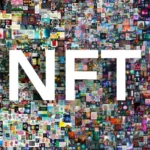Cryptocurrency trading has become an essential part of the financial landscape. Whether you’re a seasoned trader or a beginner looking to invest, choosing the right crypto exchange is crucial.
With hundreds of exchanges available, each offering different features, security measures, fees, and asset selections, making the right choice can be overwhelming.
This guide will help you navigate the essential factors to consider when selecting the best exchange for your needs.
Key Factors to Consider

Security and Regulatory Compliance
Security should be your top priority when choosing an exchange. The cryptocurrency industry is highly susceptible to hacking, fraud, and regulatory scrutiny.
- Regulatory Compliance: Ensure the exchange complies with the laws and regulations of your country.
- Security Measures: Look for two-factor authentication (2FA), cold storage, anti-phishing features, and withdrawal whitelists.
- Proof of Reserves: Exchanges should provide transparency regarding their asset holdings.
- Past Security Incidents: Research whether the exchange has experienced past security breaches and how they responded.
Security Comparison Table
| Exchange | Two-Factor Authentication | Cold Storage | Regulatory Compliance | Proof of Reserves | Security Incidents |
|---|---|---|---|---|---|
| Binance | Yes | Yes | Yes (in some regions) | Yes | Yes (2019 Hack) |
| Coinbase | Yes | Yes | Yes | Yes | No |
| Kraken | Yes | Yes | Yes | Yes | No |
| KuCoin | Yes | Partial | No | No | Yes (2020 Hack) |
Liquidity and Trading Volume
Liquidity determines how quickly you can buy or sell assets without significant price fluctuations.
- Higher liquidity means tighter spreads and lower trading costs.
- Check trading volume rankings on sites like CoinMarketCap or CoinGecko.
- Avoid exchanges with low trading volumes as they may have issues with price manipulation.
Supported Cryptocurrencies and Trading Pairs
- Ensure the exchange offers the cryptocurrencies you wish to trade.
- Some exchanges focus on major cryptocurrencies like Bitcoin (BTC) and Ethereum (ETH), while others support a vast selection of altcoins and DeFi tokens.
- Consider exchanges that support stablecoins like USDT, USDC, and DAI for seamless trading.
Fees and Costs
Fees can significantly impact your profits. Exchanges typically charge:
- Trading Fees (Maker and Taker fees)
- Withdrawal Fees
- Deposit Fees (some charge for fiat deposits)
- Network Fees (for blockchain transactions)
- Hidden Fees: Some exchanges add hidden fees in conversion rates.
Fee Comparison Table
| Exchange | Trading Fees | Withdrawal Fees | Deposit Fees | Hidden Fees |
|---|---|---|---|---|
| Binance | 0.1% | Varies | Free (Bank Transfer) | No |
| Coinbase | 0.5% | High | Free (ACH) | Yes |
| Kraken | 0.16%-0.26% | Low | Free (Bank Transfer) | No |
| KuCoin | 0.1% | Varies | Free (Crypto) | No |
User Experience and Interface
A well-designed interface makes trading easier, especially for beginners. Features to consider:
- Ease of Use: Intuitive navigation and design.
- Mobile and Desktop Apps: Availability and functionality.
- Advanced Trading Tools: Charts, order types, and analysis features.
- Learning Resources: Some exchanges provide tutorials, webinars, and demo accounts.
Deposit and Withdrawal Methods
Different exchanges offer different funding options, including:
- Bank Transfers
- Credit/Debit Cards
- PayPal or Other Payment Gateways
- Crypto Deposits
- Peer-to-Peer (P2P) Trading: Some exchanges offer direct user-to-user transactions.
Customer Support and Community Trust
An exchange with strong customer support can help resolve issues quickly. Look for:
- 24/7 live chat or email support
- Knowledge base and FAQ section
- Active community forums or social media presence
- Response Time: Some exchanges have slow response times, which can be frustrating during emergencies.
Advanced Features and Services
Some exchanges offer additional features beyond spot trading:
- Margin Trading: Borrowing funds to trade with leverage.
- Futures and Options: Derivatives trading for hedging or speculation.
- Staking and Earning Interest: Earning passive income on your holdings.
- NFT Marketplaces: Buying and selling non-fungible tokens.
- Launchpads and Token Sales: Early access to new cryptocurrencies.
ALSO READ: How to Use Leverage in Crypto Trading Without Losing Everything?
Choosing the Right Exchange Based on Your Needs

For Beginners
- Choose a user-friendly exchange like Coinbase or Kraken.
- Look for strong customer support and educational resources.
- Avoid exchanges with overly complex interfaces.
For Advanced Traders
- Consider exchanges like Binance, KuCoin, or Bybit with advanced trading tools.
- Look for features like margin trading, futures contracts, and API integrations.
- Choose exchanges with customizable trading dashboards and analytics.
For Security-Conscious Users
- Kraken and Coinbase offer strong security and regulatory compliance.
- Look for exchanges with proof of reserves and cold storage solutions.
- Avoid exchanges with a history of security breaches.
For Low Fees and High Liquidity
- Binance and KuCoin offer competitive fees and high liquidity.
- Choose exchanges with volume-based fee discounts.
- Consider maker fee discounts for adding liquidity to the order book.
For Earning Passive Income
- Choose exchanges offering staking, lending, and yield farming.
- Platforms like Binance and Kraken provide staking rewards for various assets.
- Some exchanges offer higher interest rates for locking funds in fixed terms.
Additional Tips for Choosing a Crypto Exchange
- Research Reputation: Read user reviews on forums like Reddit and Trustpilot.
- Check Withdrawal Limits: Some exchanges impose daily withdrawal restrictions.
- Understand Tax Implications: Some exchanges offer tax reporting tools.
- Beware of Fake Exchanges: Scammers set up fake platforms that look real.
- Test with a Small Deposit: Before committing large funds, test the exchange with a small trade.
ALSO READ: How to Manage Emotions When Investing in Cryptocurrencies?
Conclusion
Selecting the best cryptocurrency exchange depends on your specific needs, from security and fees to available trading pairs and advanced features.
By evaluating the factors discussed in this guide, you can make an informed decision that aligns with your trading goals.
Always conduct due diligence and consider starting with a small amount before fully committing to any exchange.
As the crypto landscape evolves, staying updated on new regulations, security protocols, and market trends will ensure a seamless trading experience.







